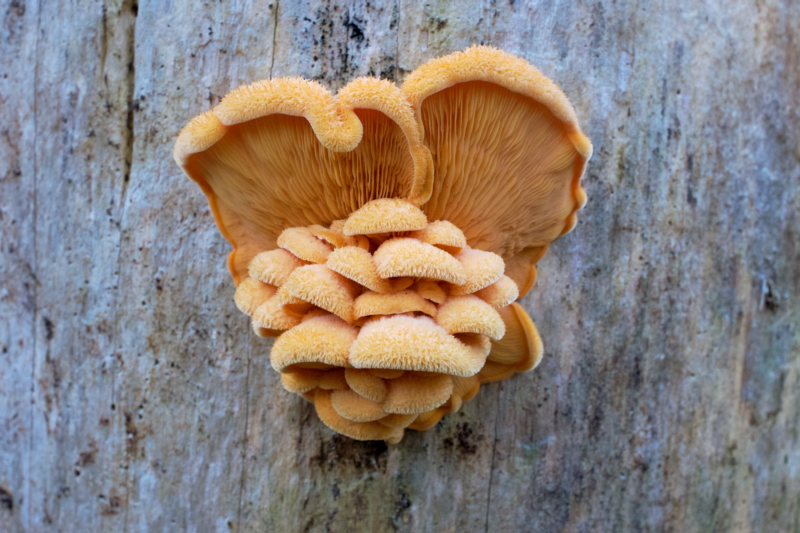During a hike in January 2017 in the Ouachita National Forest in Arkansas, I came across a fan-shaped, vibrant orange-yellow mushroom growing on the trunk of a standing dead tree. Intrigued, I conducted some research and identified it as the Orange Mock Oyster Mushroom (Phyllotopsis nidulans).
This eye-catching mushroom, known for its bright coloration and unique texture, is a gilled species commonly found across North America, including Arkansas. Its unusual appearance and unpleasant odor, which I didn’t get close to smell, make it a curious and unconventional subject of interest. Though it resembles true oyster mushrooms (Pleurotus spp.) in shape, its distinct features set it apart.

Key Characteristics of the Orange Mock Oyster Mushroom
- Appearance: The cap is bright orange to apricot and fan-shaped. It has a densely hairy or velvety texture and grows up to 3 inches wide. These mushrooms often form shelf-like clusters on deadwood.
- Gills: Bright orange and closely spaced, the gills are a defining feature. They do not run down a stem, as this species generally lacks a well-developed stem.
- Spore Print: Produces a pale pink spore print, which is significant because it helps differentiate it from true oyster mushrooms, whose spore prints are typically white to lilac in color.
- Odor: Emits a strong, often unpleasant smell, similar to skunk cabbage. However, not all specimens are equally odorous.
- Habitat: Found on decaying hardwoods and conifers, this mushroom appears from fall to late winter, thriving in cooler conditions.
- Edibility: While non-toxic, the mushroom is not considered edible due to its unpleasant odor and taste.
A Common Sight in Arkansas Forests
The Orange Mock Oyster Mushroom thrives in woodland environments like those found in Arkansas, where abundant decaying hardwoods and conifers provide the perfect substrate for its growth, especially during the cooler months. Its vibrant orange color and hairy cap make it easy to spot during this time. While it’s not a culinary option, it remains an intriguing find for anyone exploring the natural beauty of forests.
If you’re out hiking in the fall or winter, keep an eye on dead trees, you might just spot this brightly colored and uniquely textured mushroom. While visually stunning, it’s best appreciated as part of the forest ecosystem rather than your dinner plate.
